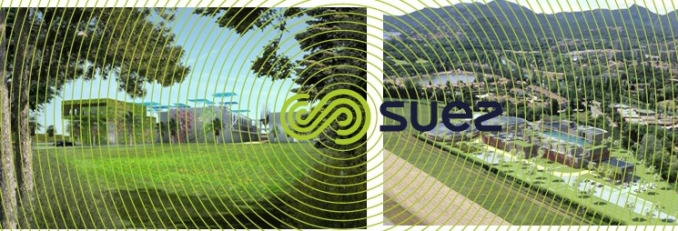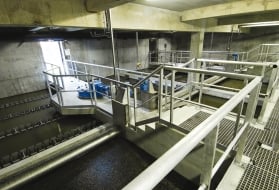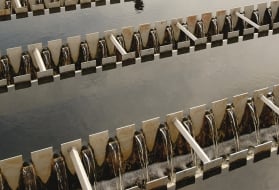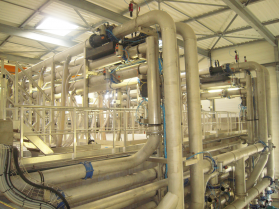influence of a plant’s environment (appearance, odours, noise): compactness
Reading time:Environmental expectations also enter into the choice of treatment process design:
- for instance, a plant constructed in an urban or residential environment must take up as little space as possible and blend into its site as much as possible (appearance, architecture); it must also aim for a “zero nuisance” levels (noise, odours) by enclosing all structures;
- or, in response to established objectives, a system can be designed with structures of widely differing sizes. However, small size plants adapt better to bold environmental objectives.
Modern technologies allow us to reduce the overall dimensions of plants and to make it easier for them to be incorporated into their surroundings:
- primary lamellar settling applied to wastewater treatment (Sédipac or Sédipac 3D processes will reduce surface areas by a factor of 3 to 4, Densadeg 2D or 4D by a factor of 5 to 7) has caused traditional primary settling to become more compact;
- biofiltration (Biofor process) can successfully replace activated sludge clarifiers and reactors and, depending on the case, reduce ground coverage by a factor of 4 to 7;
- membrane filtration can replace final clarification when separating sludge from treated water (UItrafor process) as demonstrated by the d’Orléans (France) wastewater treatment plant equipped with this process, which is perfectly integrated into its surrounding environment.






Being compact, it also costs less to cover the units. Examples are the Orléans WWTP (Densadeg + Ultrafor) and La Morée WWTP (Sédipac 3D + Ultrafor). plants.



Designed in this way, these plants are ideally suited for grouped structures that can be placed in a building or under a protected site (stadium, car park, park, etc.): this system also makes it possible to centralise gas collection for odour control treatment (see measuring odours and odour control).
Finally, a compact plant is more compatible with architectural development.
However, the client often prefers their plant, whether or not it is enclosed, to be recognised by its users. This presupposes an effort in terms of both education and communication and this will start with the architectural aspect of site development.
A good example is provided by the La Morée plant constructed for the SIAAP which, through its architecture and its glazed facades, stands out through the sheer size of its building without drawing too much attention to its wastewater treatment role.



Bookmark tool
Click on the bookmark tool, highlight the last read paragraph to continue your reading later















